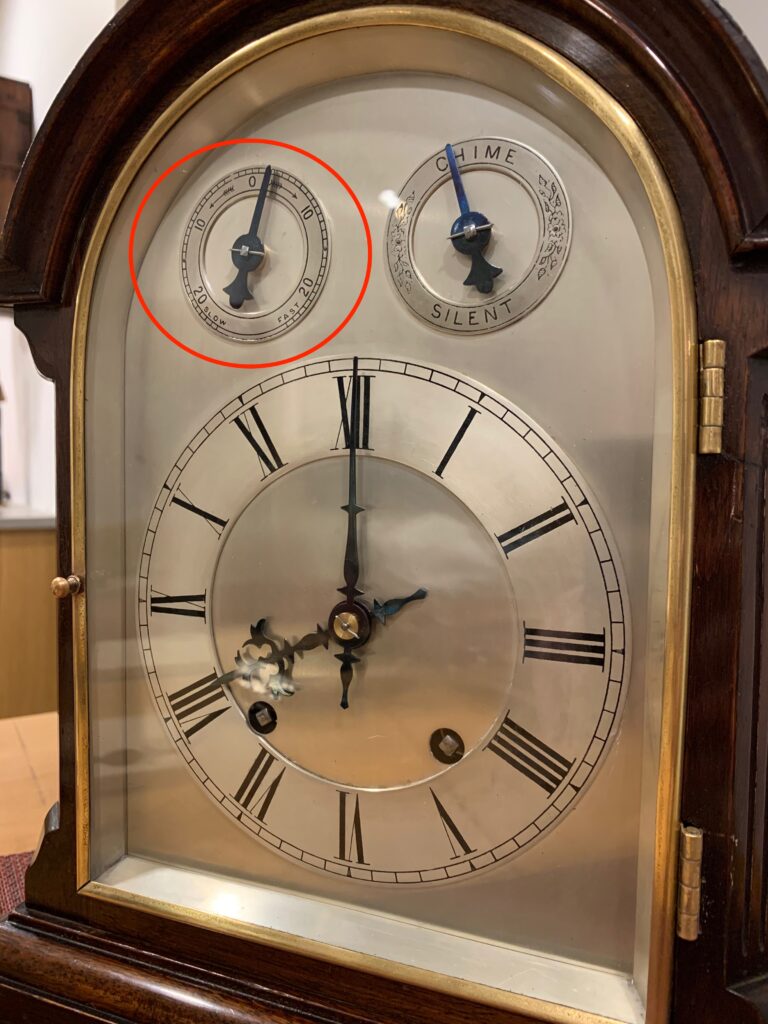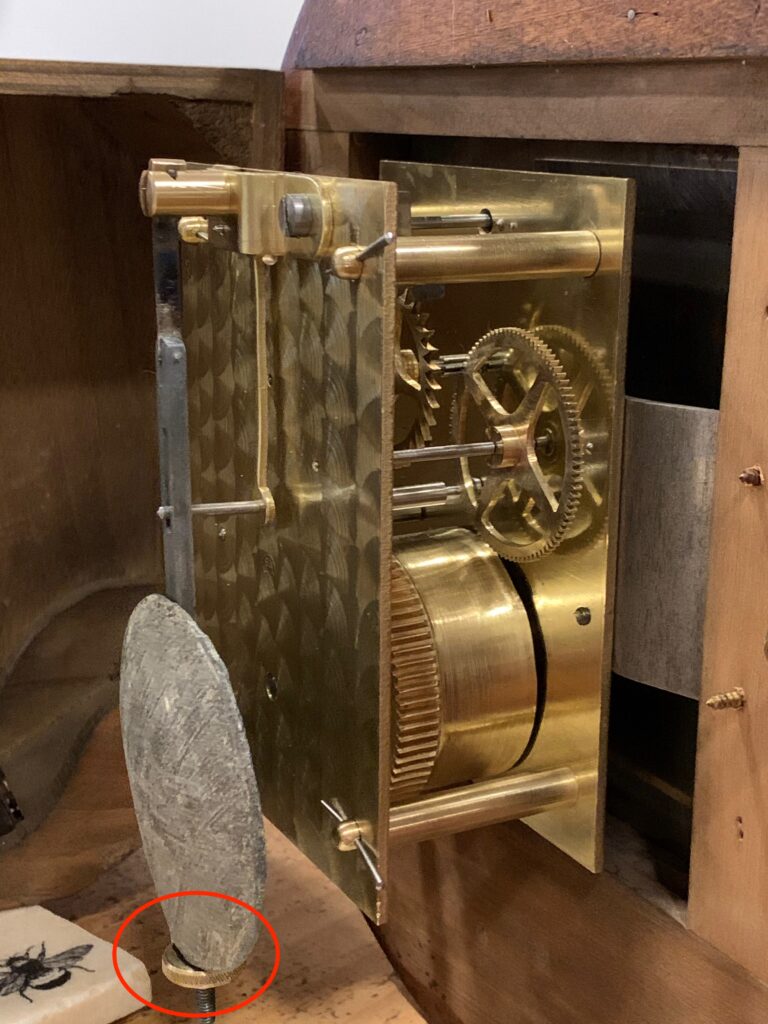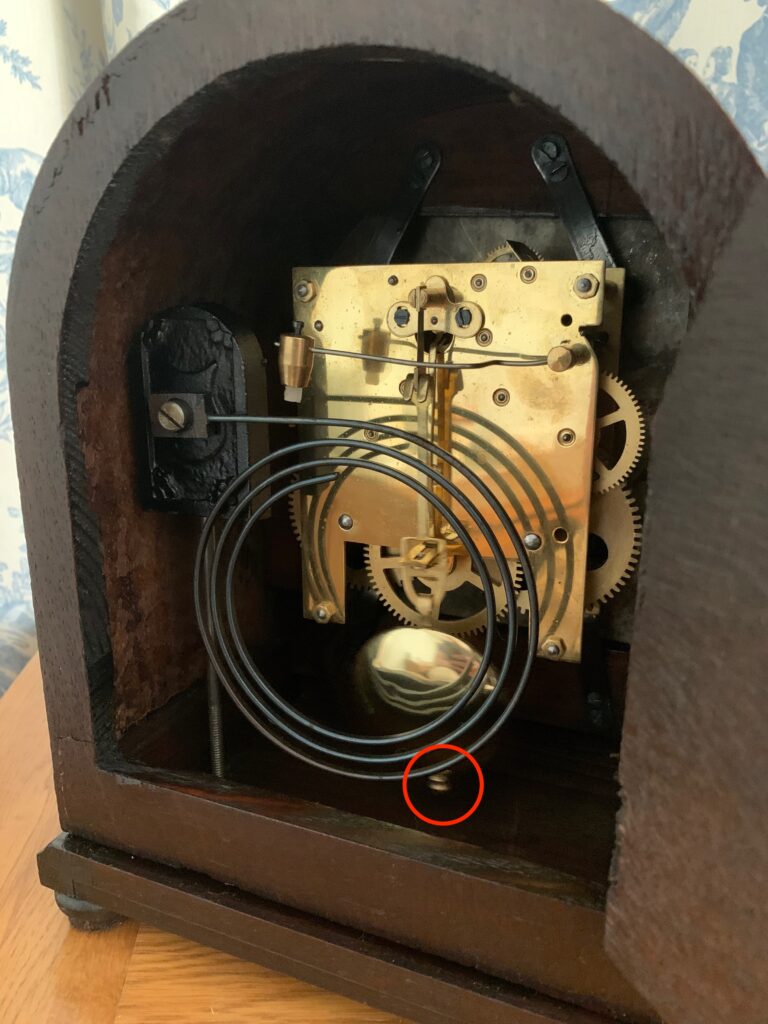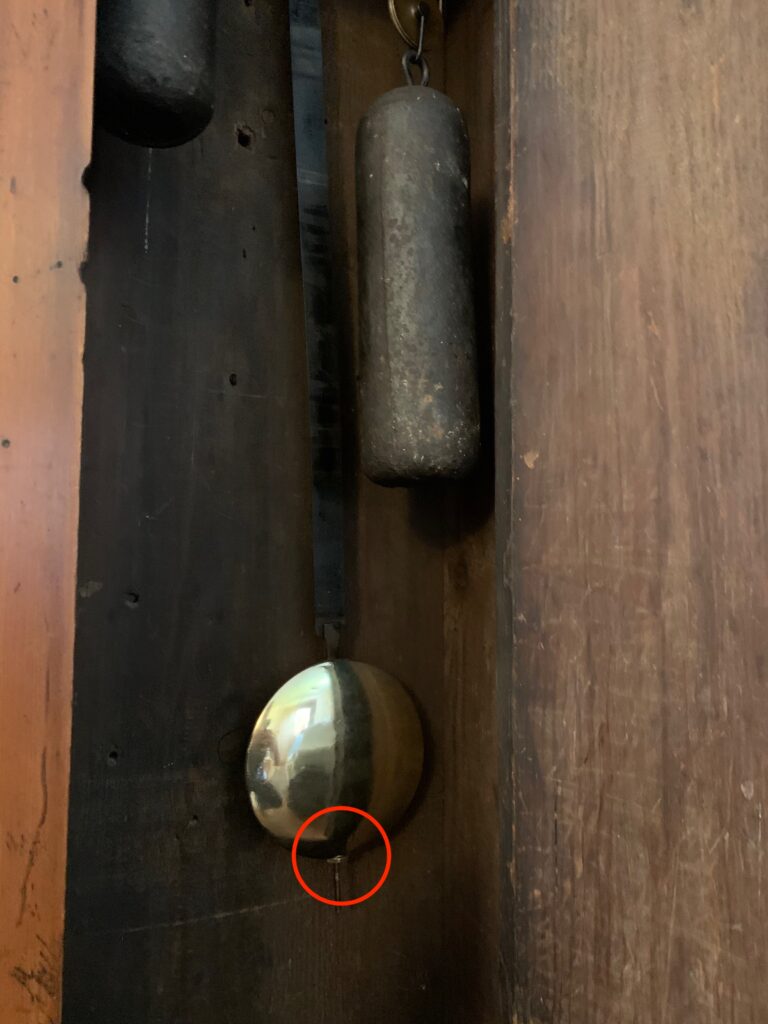Clocks with pendulums are regulated not by some special part inside the clock, but by their pendulum length. Gravity acts on the pendulum to make it swing with a certain period, and if this is too short the clock runs fast – and vice versa, if the pendulum is too long the clock will run slow.
On the bottom of the pendulum, there is a small nut which can be rotated to adjust the time keeping of the clock.
When you are looking from the back of the clock, this is all you need to know:
- To lift the pendulum (and make the clock run faster) turn the nut to the right.
- To lower the pendulum (and make the clock run slower) turn the nut to the left.
In other words:
- If your clock is gaining time, turn it to the left.
- If it’s losing time, turn it to the right.
Be aware that on short pendulums, even quite small adjustments will tend to make fairly big changes, so keep to small amounts like a half-turn to see what effect it has. On longcase pendulums, small changes are more or less fine tuning, and much less sensitive.
How to avoid getting confused
I have found that generally, people find it hard to regulate a pendulum when they look at the hands of a clock. If it’s telling the wrong time, it’s tempting to keep resetting the hands. This means you can’t keep track of whether the clock is losing time or gaining time! The best way to avoid confusing yourself about this is to leave the hands on the clock well alone, even if the time indicated is wrong, and think instead about how much time the clock gains or loses in a day. Once you’ve got the pendulum set to the right position, you can set the time again. It will only take a day or two to narrow the changes down and get your clock keeping nearly perfect time.
How accurately can you set a mechanical clock?
On a typical mantel clock, you won’t be able to get better than a few minutes a week accuracy. On a longcase clock, with its longer pendulum, you can get really amazing results – potentially just a few seconds a week. The biggest factor is temperature changes. When metal gets hot, it expands. This means the pendulum will run slower in hot weather and faster in cold weather.
If you’re lucky…
If you’re very lucky and have a high quality clock, you may see a dial on the front of the clock which helps you set the clock slow or fast.

I would recommend first putting this in the central position and taking the trouble to adjust the pendulum nut (as above). Then, when the seasons change, you can set the clock to run slower or faster from the front – much easier!


